 When it comes to brand awareness, think BIG! And by big, we mean colossal, enormous, gargantuan… you get the drift. That’s where wall branding comes in – the art of transforming walls into living, breathing advertisements that you simply can’t ignore.
When it comes to brand awareness, think BIG! And by big, we mean colossal, enormous, gargantuan… you get the drift. That’s where wall branding comes in – the art of transforming walls into living, breathing advertisements that you simply can’t ignore.
Wall branding is an art form that dates back centuries, tracing its roots to ancient societies that used murals to communicate stories, beliefs, and histories.
Today, this age-old practice has been transformed by the modern world of branding and advertising, creating a potent combination of art and commerce.
In the contemporary urban landscape, wall branding has become a widespread form of marketing. From city streets to highways, from public parks to the sides of office buildings, companies large and small vie for prime advertising, turning walls into canvases for their messages and logos.
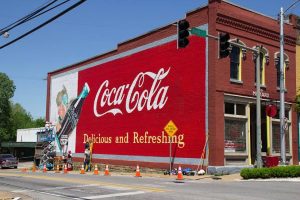 Wall branding refers to the strategic use of walls as a medium for visual communication, branding, and marketing. It involves transforming plain walls into impactful visual displays that convey a message, promote a brand, or enhance the aesthetic appeal of a space.
Wall branding refers to the strategic use of walls as a medium for visual communication, branding, and marketing. It involves transforming plain walls into impactful visual displays that convey a message, promote a brand, or enhance the aesthetic appeal of a space.
In essence, it is a type of outdoor advertising that leverages large, often vertical surfaces to deliver messages and create brand awareness. Unlike traditional outdoor advertising like billboards or bus shelter ads, wall branding utilizes entire walls as the medium, commanding attention and making a statement through sheer size and visual impact.
You’ve probably seen it without even realizing: the towering images of Red Bull on city skyscrapers, Coca-Cola’s iconic logo emblazoned across the sides of buildings, or Nike’s swoosh seemingly everywhere you turn. These are all examples of brands that have leveraged wall branding to make their mark on the urban landscape.
Wall branding can take several different forms, each with its unique advantages and considerations. Here are some of the most common types:
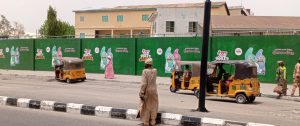 1. Wall Murals: Murals are large-scale works of art painted directly onto a wall, often featuring a brand’s logo, message or imagery. They can range from realistic depictions to abstract designs. Wall murals are particularly effective for economy pack or even agricultural input products that are targeted at the rural or semi-rural communities. They are cost effective and can fit into divers wall sizes.
1. Wall Murals: Murals are large-scale works of art painted directly onto a wall, often featuring a brand’s logo, message or imagery. They can range from realistic depictions to abstract designs. Wall murals are particularly effective for economy pack or even agricultural input products that are targeted at the rural or semi-rural communities. They are cost effective and can fit into divers wall sizes.

2. Wall Wraps: Wall wraps are a form of vinyl decal that is applied directly to a wall. Wraps can be easily removed and replaced, making them ideal for events, product launches or seasonal promotions. This is commonly referred to as wallpaper in Nigeria.
 3. Wall Art Installations: Brands can partner with artists to create custom installations that incorporate the brand’s message or identity into a unique, visually compelling work of art. These can be permanent fixtures or temporary displays.
3. Wall Art Installations: Brands can partner with artists to create custom installations that incorporate the brand’s message or identity into a unique, visually compelling work of art. These can be permanent fixtures or temporary displays.

4. Wall Signage: Traditional signs mounted on walls, often featuring a company logo, name or message. Signage can be made from various materials, such as metal, flex, wood, or acrylic on panels can be illuminated for added visibility.
 5. Wall graffiti: often referred to as street or urban art, is a form of visual expression that involves the creation of images or messages on public walls, buildings, or other surfaces and can be used to make political statements. Graffiti artists often use their work as a form of protest or social commentary, expressing their opinions on issues such as government corruption, racism, and war. It can also be seen as a means for marginalized communities to assert their presence and reclaim public spaces that may have been neglected or ignored.
5. Wall graffiti: often referred to as street or urban art, is a form of visual expression that involves the creation of images or messages on public walls, buildings, or other surfaces and can be used to make political statements. Graffiti artists often use their work as a form of protest or social commentary, expressing their opinions on issues such as government corruption, racism, and war. It can also be seen as a means for marginalized communities to assert their presence and reclaim public spaces that may have been neglected or ignored.
 6. Digital Wall Displays: Electronic screens or displays showcasing dynamic content, such as videos, images or information. Digital displays can be used to share brand stories, showcase products or provide interactive experiences.
6. Digital Wall Displays: Electronic screens or displays showcasing dynamic content, such as videos, images or information. Digital displays can be used to share brand stories, showcase products or provide interactive experiences.
 7. LED Walls: High-tech displays using light-emitting diodes (LEDs) to create dynamic, attention-grabbing visuals. LED walls can be used to showcase brand stories, products, or messages in a modern and futuristic way.
7. LED Walls: High-tech displays using light-emitting diodes (LEDs) to create dynamic, attention-grabbing visuals. LED walls can be used to showcase brand stories, products, or messages in a modern and futuristic way.
Each type of wall branding offers unique benefits and can be used to achieve specific marketing goals. By understanding the characteristics and applications of each type, businesses can choose the most effective wall branding solutions for their needs.
As we delve deeper into the captivating world of wall branding, let’s take a moment to explore the varied and innovative ways some top brands have embraced this powerful marketing tool:
COCA-COLA has a long history of using wall branding in its marketing campaigns. Here’s how the soft drink giant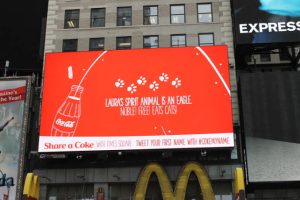 has used this technique:
has used this technique:
- ‘Share a Coke’ Campaign: One of Coca-Cola’s most well-known wall branding campaigns, where they replaced the Coca-Cola logo on bottles with common names. This campaign was further amplified with wall murals featuring the names in local languages.
- Personalized Walls: Coca-Cola has taken personalization to new heights by designing wall branding that reflects local communities. For example, in one campaign, Coca-Cola created a wall mural in a New York City neighborhood that featured local landmarks, people and phrases, making the wall an extension of the community.
This personalized approach has helped Coca-Cola forge deeper connections with consumers by demonstrating it’s understanding and respect for local culture and customs, increasing the relevance and impact of their wall branding.
Moving on, we have INDOMIE, the popular instant noodle brand.
Indomie has used wall branding to increase their visibility and connect with consumers on a local level. Their wall murals often feature colorful illustrations and catchy slogans that highlight the brand’s core messaging around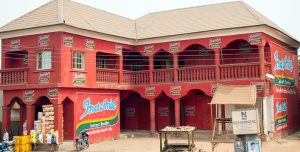 satisfaction and convenience.
satisfaction and convenience.
Two notable examples of Indomie’s wall branding are:
- A campaign that featured murals in Lagos and Abuja, which encouraged consumers to share their favorite ways to prepare Indomie noodles. This strategy helped to generate buzz around the brand and engage directly with consumers.
- The “Chop Chop Life” mural campaign. This initiative aimed to highlight the various ways in which Indomie noodles can be enjoyed in Nigerian culture.
The “Chop Chop Life” murals featured vibrant illustrations of people enjoying Indomie noodles in different settings, from roadside stands to homes and parties. Each mural also included a unique QR code that, when scanned, led to a dedicated website with more information about the brand and its products.
Another brand to discuss is the dairy company, PEAK MILK.
Peak Milk, which is known for its milk and powdered milk products, has used wall branding in Nigeria to promote their products and engage with local communities.
Their murals often feature the brand’s signature white and red color scheme, with messages that emphasizes the nutritional benefits of their products.
- “Peak Milk, Nourishing the Future” Campaign is one that featured wall murals in various cities with messages that emphasized Peak Milk’s commitment to providing nutrition for children and families. The murals often included images of children playing and smiling, reinforcing the brand’s focus on the health and well-being of young ones.
- “Peak Milk Moms” campaign, with messages like “Good Health Starts with Peak Milk” and “Every Family Needs Peak Milk” were messages the brand used the wall branding strategy to pass across to its audience.
Peak Milk has indeed used wall branding in several other campaigns in Nigeria.
Lastly, the telecommunications company, MTN NIGERIA.
MTN has used wall branding to promote their products and services, as well as engage with local communities in Nigeria.
- One notable campaign was “Everywhere you go,” which featured wall murals in several cities across Nigeria
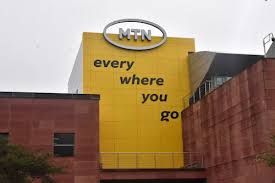 emphasizing the company’s expansive network coverage. These murals often included images of rural landscapes and urban centers, underscoring MTN’s commitment to providing service to all Nigerians, regardless of location.
emphasizing the company’s expansive network coverage. These murals often included images of rural landscapes and urban centers, underscoring MTN’s commitment to providing service to all Nigerians, regardless of location. - In addition to traditional wall branding, MTN Nigeria has also used wall branding to promote local events and initiatives. One example was MTN’s partnership with the Lagos State Government for the Lagos Countdown event that promoted the New Year’s Eve celebration.
It is important to recognize these three significances of using wall branding that these four leading brands have commonly shown.
Other brands can experience same, if wall branding is well-executed in their own marketing campaigns.
- Increased Visibility: Wall branding allows brands to create large-scale, eye-catching displays that capture the attention of passersby and increase brand awareness. It also creates strong visual presence for brands, increasing its exposure and recognition among potential customers.
- Connection with Local Communities: Many brands use wall branding to showcase their understanding and appreciation for local culture, just like the above-mentioned brand – Coca-Cola, increasing their relevance and creating a sense of community. By integrating wall branding into the local landscape, businesses can show they’re invested in the community, fostering a sense of connection and loyalty among residents. Because it is an environmentally-friendly option compared to traditional print or digital advertising, it uses fewer resources and generates less waste.
- Long-lasting Impact: Unlike traditional advertising methods like billboards or print ads, wall branding creates a lasting impression that can endure for years, continually reinforcing the brand’s message and increasing its visibility in the local and urban community. This long-term impact can result in increased brand recognition, loyalty and ultimately, increased sales for the brand.
Wall branding is a powerful marketing tool, but it’s not immune to mistakes. Here are some common pitfalls and how to avoid them:
- Poor Location Choice: Choosing the wrong location can result in low visibility or a message that doesn’t resonate with the target audience. To avoid this, conduct thorough research on potential locations and get feedback.
- Lack of Creativity: Bland or uninspired wall branding can quickly be forgotten. To ensure your message stands out, work with a creative team to design an engaging and memorable visual experience.
- Ineffective Messaging: Failing to craft a compelling message that resonates with your target audience can result in a wasted opportunity. To avoid this, make sure your message is clear, concise and relevant to your audience.
- Poor Execution: Sloppy or rushed wall branding can detract from your message. Take the time to ensure your design is of high quality and the installation is done professionally.
Wall branding isn’t just about placing a logo onto a wall and calling it a day. It’s a strategic, meticulously-crafted advertising technique that plays on human psychology. You see, the human brain is wired to seek out patterns and shapes. By creating massive, eye-catching visuals that command your attention, wall branding manages to tap into that primal urge.
Think about it – you can’t skip or block a wall ad like you can with an online ad.
Wall branding provides that unique opportunity for brands to make a lasting impression and cement their place in the hearts and minds of consumers. It’s a technique that will continue to be a valuable asset in the marketing arsenal for years to come especially as it is one of the most cost effective communication channels.
Authored by @EuniceAdebayo